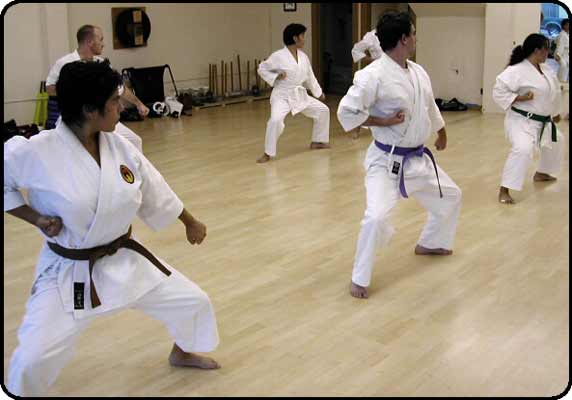Kata vs. sparring. Why not have both? Or what if both? And how do you define "kata?"
You just can't. Sorry does my head in. If you need realism in training. Need to be in the area you are going to fight have access to every tool you could conceivably use because otherwise you will not be able to fight.
Then kata does not fit that module.
So I am sure you can give the value of kata based on its own merits but let's see you give the value of kata based on these merits.
Sparring isn't a necessary part of self defense training. Beyond that, it is detrimental BECAUSE we revert to our training under duress. Unless sparring allows the person the opportunity to de-escalate, escape, evade, use a weapon, improvise a weapon, use the terrain etc. Does sparring usually contain these and other real world elements (lighting, environment, multiple attackers, starting from a position of disadvantage)? No. Does scenario based training contain these elements? Yes.
Do you spar with the possibility that other attackers will join the fight?
Do you spar with the possibility that the attacker(s) will have a weapon?
Do you spar with the ability to use a weapon, conventional or improvised?
Do you have the opportunity to de-escalate the situation so the sparring section doesn't even happen?
Do you have the opportunity to escape or evade the situation prior to or during the sparring session?
Do you spar only in a well lit, open space?
Do you spar with a specific rule set that both of you have agreed to abide by?
Do you spar only on a dry surface?
Do you spar only indoors?
Do you spar on stairs, in an elevator, inside a car, in the parking lot between two cars, on a slippery surface that slopes?
Do you spar to a conclusion i.e. you have escaped the situation or the opponent is no longer able to continue the attack?
Do you spar starting at a position of disadvantage i.e your opponent is standing over you or behind you?
Wait that is the arguments against sparring specifically quoted. I am suggesting they are the same arguments against kata. I could have changed the quotes to make that a bit more understandable.
The topic of one vs. the other has been discussed so many times on MT (and probably everywhere else by now), and the positions of people are so ingrained that if you're in more than one discussion on the topic, you could practically just copy and paste your response from the first thread and dispense with coming up with new ones.
I've seen a LOT of people bash both sparring and kata, and often for almost the exact same reasons. Each side states emphatically, "well we do that too," cites all of the luminaries of their art and how they defeated many opponents as a result of their sparring or kata training, and with each citation comes the proverbial, "and that's why (insert training method) works/is better/is better than yours."
The truth is that unless you're in a real fight, you're not in a real fight. Everything you do is going to stop short in some way for the sake of safety (blinding your partners in order to practice realistic eye gouges is frowned upon).
I've trained in arts that use kata with no sparring, I've trained in arts that use sparring, but no kata, and I've trained in arts that use both, though depending on how you define kata and sparring, chances are that most arts, if not all arts, use both in some form or another.
There are different types of kata, and different ways of teaching with kata depending on the art; some use the solo kata by themselves, training in a broader range of techniques separately and with a partner. Others use the solo kata, and then break down the kata and train with a partner on the hidden techniques. Other arts have kata that are partnered and may train the kata by themselves, using separate drills to train in resistance, while others will do that to teach the moves, and then perform the kata with resistance.
Sparring is the same way; some sparring is exclusively for sport and preparation for competition. Some sparring is scenario based, and some sparring is realistic, but performed strictly in the confines of the studio and in whatever uniform the students normally wear.
I'm going to agree with you in the thesis statement you make: "You can't say sparring is detrimental if you are pro kata. not for the sake of realism," as both have their limitations; how well each works is really a matter of how the art is taught as a whole rather than a matter of kata vs. sparring.
I have never trained in a school that calls itself reality based or scenario based. But whatever I did train in worked well enough that when I've had to use it "on the street," it worked and I went home. That doesn't mean that scenario based and reality based training is inferior or unnecessary; it simply means that those schools utilize a different teaching pedagogy than the ones where I trained.
And that's really what it comes down to; teaching pedagogy. That, and the philosophy of the art (every art has one, even if it's as rudimentary as kill or be killed). Different methods are better suited to some arts than to others, and better suited to some people than to others.
You can comb the web and find videos of any style beating any style, and variation of any style beating any other variation of that same style. Quoting from the Ip Man movie, "It's not the style; it's you." That, and your instructor.
